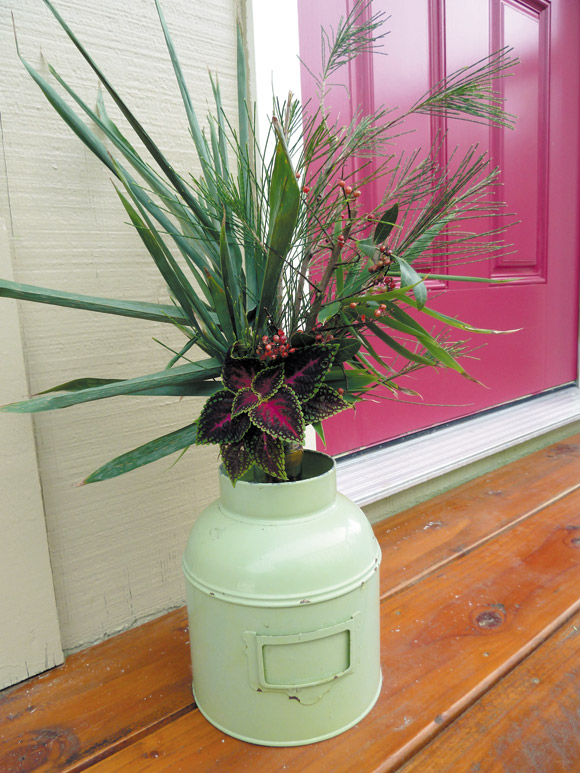Arranging A Traditional Ritual

Wabi-sabi kadomatsu sounds like a mouthful, but it is a simple and natural practice that can bring you all the peace and joy imaginable | Jane Esaki photo
Reliance on such practices may seem cockamamie to some, but they help me sleep at night — especially the Dec. 31 ritual, when I place a kadomatsu (gate pine) at the front entrance to my home.
The practice has very little to do with consciously preserving my Japanese heritage, patronizing gods or hoping that the pine and bamboo elements in the decorative arrangement will bring longevity, prosperity and all kinds of good fortune throughout the year. Insipid as it may seem, I follow the custom probably because my grandma did it, my mom and sister do it, and I even passed it on to my daughter.
The last-minute undertaking can become a task, so sometimes I flirt with the idea of buying a ready-made arrangement, often large, accurately proportionate, perfectly bound with heavy straw rope and embellished with faux cherry blossoms. But I always refrain — not because of my tradition of being cheap, but because when it comes to art, I actually prefer wabi-sabi, the aesthetic of imperfection, impermanence and incompleteness. Also, this way, my kadomatsu will be forgiveable.
Except this year, it appears I may not get away with it.
As the sun is setting, I search high and low for sprigs of bamboo and pine on my way home. I manage to find a clump of bamboo at the end of the road and prudently clip off a few fronds. Now for the iron-wood pines. But they are nowhere in sight. Where are these nuisance trees, with needles that are said to kill the undergrowth of our forests, when we need them most?
The pines are so elusive I decide to call it a day, returning home with only the bamboo. I place the fronds on my kitchen table, sadly imagining that my kadomatsu will be excessively incomplete, inexcusable even under the guise of wabi-sabi.
On the heel of the demise of my quarter-century practice, I hear a car drive up. My mom and sister walk up to my door, and my sister presents me with her very own kadomatsu arranged in a recycled bottle! Well, very happy new year to me!
At first sight, the rustic arrangement is beautiful. The pine needles are lopped off to show its bonsai-like spikes, and a sprig of cured, tiny, red Brazilian Christmas berries sits in the middle surrounded by variegated pink-and-green coleus leaves. How original! As my sister mentions the lack of bamboo in her arrangement, she notices my fronds lying on the table and, with one fell swoop, integrates them into her arrangement.
With the north winds blowing outside, I insert the kadomatsu into a rusty green cannister for stability. I deliberately orient the arrangement outside my front door and, while doing so, I am reminded why I do this every year. I do it as a solemn goodbye to the past year, an exciting welcome to the new one, and because of an implicit connection to family.
And like all my other superstitions, I know it will help me sleep tonight. janeesaki@gmail.com



